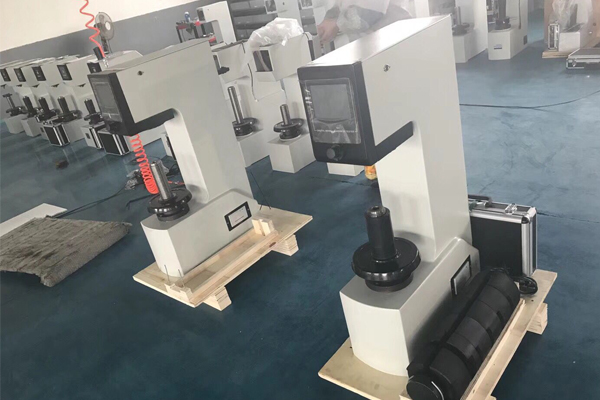HB-3000C Electronic Loading Brinell Hardness Tester
NO:3000kgf brinell hardness tester, 8-650HBW hardness rangeWe"re here to help:
Easy ways to get the answers you need. Send E-mail WhatsAPP/Wechat
+86-15254140530
Easy ways to get the answers you need. Send E-mail WhatsAPP/Wechat
+86-15254140530
1. Simple Introduction
This instrument adopts single chip microcomputer control, signals collected sensor, and stepping motor loading closed loop control system, with 10 levels of experimental force.
It is in accordance with GB/T231.2, and JJG150 standards.
2. Technical parameters
1.Test force: 62.5kgf(612.9N), 100kgf(980.7N), 125kgf(1226N), 187.5kgf(1839N), 250kgf(2452N), 500kgf(4903N), 750kgf(7355N), 1000kgf(9807N), 1500kgf(14710N), 3000kgf(29420N)
2. Indenter specifications
2.1 Φ2.5mm ball indenter
2.2 Φ5mm ball indenter
2.3 Φ10mm ball indenter
3. Measuring microscope magnification times: 20X
4. Minimum reading of micro hub wheel
5. Max height of the specimen:220mm;
6. Distance from indenter to outer wall:135mm;
7. Time delay control: 5-60s adjustable
8. Power supply: AC220V±5% 50/60Hz
9. Dimension:550*210*750 mm
10. Weight:112Kg
11. The relationship between indentation diameter (d) and ball diameter (D) should be maintained at 0.25 D<d < 0.6 D when the test force is selected.
12. Hardness testing range: 8-650HBW
Application range
Brinell hardness test is mainly used for hardness determination of cast iron, steel, non-ferrous metals and soft alloys.
This machine has the characteristics of high precision, high repeatability and stability, easy operation and so on.
Brinell hardness is characterized by large testing force and large indentation diameter, which is suitable for hardness testing of metal materials with large grain size. Such as: cast iron, non-ferrous metals and alloys, various annealed and tempered steels, especially for softer metals of pure aluminum, lead, tin, etc.
This instrument adopts single chip microcomputer control, signals collected sensor, and stepping motor loading closed loop control system, with 10 levels of experimental force.
It is in accordance with GB/T231.2, and JJG150 standards.
2. Technical parameters
1.Test force: 62.5kgf(612.9N), 100kgf(980.7N), 125kgf(1226N), 187.5kgf(1839N), 250kgf(2452N), 500kgf(4903N), 750kgf(7355N), 1000kgf(9807N), 1500kgf(14710N), 3000kgf(29420N)
2. Indenter specifications
2.1 Φ2.5mm ball indenter
2.2 Φ5mm ball indenter
2.3 Φ10mm ball indenter
3. Measuring microscope magnification times: 20X
4. Minimum reading of micro hub wheel
5. Max height of the specimen:220mm;
6. Distance from indenter to outer wall:135mm;
7. Time delay control: 5-60s adjustable
8. Power supply: AC220V±5% 50/60Hz
9. Dimension:550*210*750 mm
10. Weight:112Kg
11. The relationship between indentation diameter (d) and ball diameter (D) should be maintained at 0.25 D<d < 0.6 D when the test force is selected.
12. Hardness testing range: 8-650HBW
Application range
Brinell hardness test is mainly used for hardness determination of cast iron, steel, non-ferrous metals and soft alloys.
This machine has the characteristics of high precision, high repeatability and stability, easy operation and so on.
Brinell hardness is characterized by large testing force and large indentation diameter, which is suitable for hardness testing of metal materials with large grain size. Such as: cast iron, non-ferrous metals and alloys, various annealed and tempered steels, especially for softer metals of pure aluminum, lead, tin, etc.







 Jinan Focus Test Instrument Co., Ltd.
Jinan Focus Test Instrument Co., Ltd.

 Jinan City, Shandong Province, China
Jinan City, Shandong Province, China 